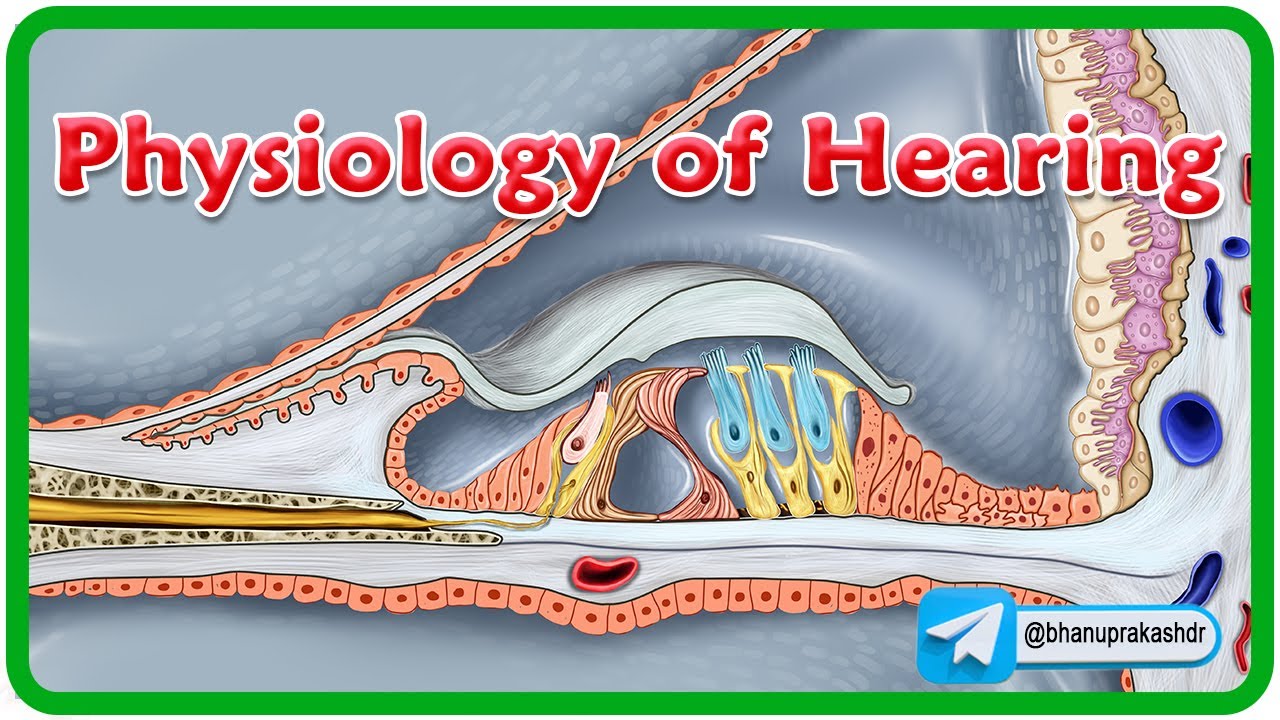StudyJams! Hearing and the Ear
Summary
TLDRIn this engaging conversation, two friends discuss the importance of hearing and how the ear functions. They explore the anatomy of the ear, from the outer ear and ear canal to the middle ear with its tiny bones, and finally, the complex inner ear responsible for balance. The dialogue highlights how sound waves are processed and interpreted by the brain, emphasizing the connection between hearing and balance. With humor and relatable anecdotes, the friends remind viewers to protect their ears for better hearing and dancing skills, making learning about sound anatomy both informative and fun.
Takeaways
- 🎶 Loud music can damage your hearing if you don't take precautions.
- 👂 The outer ear, including the earlobes, helps funnel sound into the ear canal.
- 🔊 The ear canal leads to the eardrum, which vibrates in response to sound waves.
- 🦴 The middle ear contains three tiny bones: the hammer, anvil, and stirrup, which amplify sound vibrations.
- 🌀 The inner ear is a complex structure that includes the cochlea, where sound is converted into signals for the brain.
- 🧠 The brain's Hearing Center interprets sound signals and determines what we are hearing.
- ⚖️ The inner ear also plays a crucial role in maintaining balance through its semicircular canals.
- 👣 Damaging your ears can affect not only your hearing but also your balance and physical coordination.
- 🎧 Understanding the ear's anatomy helps emphasize the importance of ear protection.
- 🙌 Taking care of your ears ensures you can enjoy music and maintain balance throughout life.
Q & A
What is the main topic of the conversation?
-The main topic of the conversation is about the importance of protecting one's ears while listening to loud music.
What are sound waves?
-Sound waves are vibrations that travel through the air, which are interpreted by the ear and sent to the brain.
What is the role of the earlobe?
-The earlobe is part of the outer ear, which helps funnel sound into the ear canal.
What happens when sound reaches the eardrum?
-When sound reaches the eardrum, it causes the membrane to vibrate, similar to a drum.
What are the three tiny bones found in the middle ear?
-The three tiny bones in the middle ear are called the hammer, anvil, and stirrup.
How does the inner ear contribute to hearing?
-The inner ear contains complex structures that convert sound waves into signals sent to the brain for interpretation.
What is the function of the cochlea?
-The cochlea is responsible for converting sound waves into nerve signals that the brain can interpret.
How does the inner ear help with balance?
-The inner ear contains semicircular canals that send messages to the brain to help maintain balance.
What are the consequences of damaging your ears?
-Damaging your ears can result in hearing loss and can also affect your balance.
What is the brain's Hearing Center?
-The brain's Hearing Center is the area that processes sounds and identifies what they are and their location.
Outlines

Cette section est réservée aux utilisateurs payants. Améliorez votre compte pour accéder à cette section.
Améliorer maintenantMindmap

Cette section est réservée aux utilisateurs payants. Améliorez votre compte pour accéder à cette section.
Améliorer maintenantKeywords

Cette section est réservée aux utilisateurs payants. Améliorez votre compte pour accéder à cette section.
Améliorer maintenantHighlights

Cette section est réservée aux utilisateurs payants. Améliorez votre compte pour accéder à cette section.
Améliorer maintenantTranscripts

Cette section est réservée aux utilisateurs payants. Améliorez votre compte pour accéder à cette section.
Améliorer maintenantVoir Plus de Vidéos Connexes

Masking the ABR (1/2): Introduction to Masking

Physiology Of Hearing Animation👂Understanding the Sound Journey 🎶

Indra Pendengaran Telinga; Struktur dan Mekanisme Pendengaran Manusia

👂Working of Human Ear in Telugu | How Human Ear Works Explained in Telugu | Telugu Badi

Sistem Indera Manusia : Telinga

What Happens When We Pop Our Ears
5.0 / 5 (0 votes)
